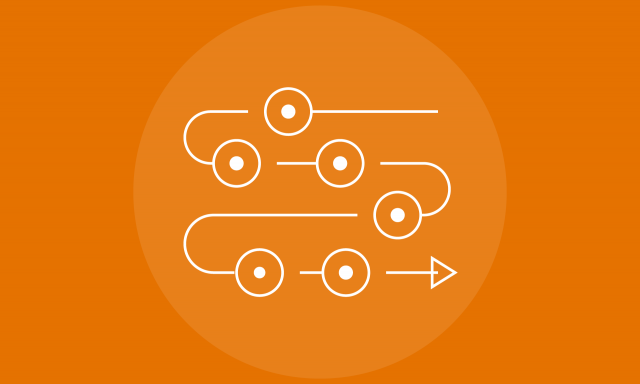

 Article
Article

 Sixty years ago, famous American economist Leonid Hurwicz did groundbreaking research about the economic mechanisms theory. Today, Darden expert is interested in designing mechanisms to solve big challenges like energy usage and traffic flows.
Sixty years ago, famous American economist Leonid Hurwicz did groundbreaking research about the economic mechanisms theory. Today, Darden expert is interested in designing mechanisms to solve big challenges like energy usage and traffic flows.

Insights from
Written by
Most of us can’t imagine life without Google. Whether we’re looking for running shoes or rutabagas, we simply expect that search results—and the sponsored ads that accompany them—will effortlessly populate our screens. But how do those ads, and the order in which they appear, show up in the first place? It turns out they’re there because of a system of high-speed algorithms and automated auctions structured using something called “mechanism design.”
“In today’s information economy, economic interactions are happening not between humans but between algorithms that interact at the frequency of milliseconds, says Darden professor Michael Albert. “Increasingly, both sides of various exchanges are algorithmically driven. Ad auctions are the simplest example—you have bidding agents on one side and the Google AdWords platform on the other.”
Online ad auctions’ structure and their optimal performance are not possible using traditional market design ideas. “The modern system of online advertising and other transformative applications, like kidney exchanges and residency matching for new doctors, are complex, dynamic systems that involve self-interested, strategic agents,” explains Albert. “What made those systems possible is the field of mechanism design.”
Mechanism design sits at the intersection of economics, game theory and artificial intelligence. It takes an engineering approach to solving a wide range of problems where there are interactions among individuals, markets and institutions. Its theoretical foundations were formed in the 1960s by University of Minnesota professor Leonid Hurwicz, who was trying to solve a particular policy problem: How should a planner reach a decision when the quality of the decision relies on private information spread among a number of people? Hurwicz’s rigorous, mathematical analysis of that problem became the core of what is now called mechanism design theory.1
Among Hurwicz’s insights was the idea that any solution should account for the realities of economic life; namely, people strive to maximize their expected payoff and may withhold disadvantageous information or simply lie, hoping to, for example, lower their taxes or maximize profit. Therefore, any solution should ensure that those who may possess confidential information, which may have a bearing on the decision, are offered incentives to reveal that information.
Mechanism design theory was further developed a few decades later by Roger Myerson at the University of Chicago and Eric Maskin at Harvard. It enhanced our thinking about how to structure a process to achieve a certain goal, such as social welfare or private profit. For example, mechanism design demonstrates why an auction is typically the most efficient way to allocate private goods among a set of potential buyers. For these contributions to mechanism design theory, Hurwicz, Myerson and Maskin shared the 2007 Nobel Memorial Prize in Economic Sciences.
Darden’s Albert is particularly interested in designing mechanisms to solve big challenges like energy usage and traffic flows. “My research goal,” says Albert, “is to apply a data driven approach to optimize the design of those mechanisms.”
Thanks to automation, participants in various systems (whom economists call “self-interested agents”) increasingly interact electronically, generating volumes of data that can be analyzed and incorporated into future iterations of the mechanism. According to Albert, repeated electronic interactions provide an opportunity to learn the information necessary to construct the optimal mechanism. “When you combine the growing wealth of available data with algorithmic approaches,” explains Albert, “you can create more efficient systems to allocate and utilize resources.”
Energy usage is a case in point. “The move to a smart grid for the distribution of electricity and a growing number of electric vehicles and other intelligent appliances will create opportunities to significantly affect energy usage through pricing and scheduling,” explains Albert.
The grid can delay charging of an electric vehicle in order to smooth demand. However, optimally scheduling the charging demand of electric vehicles within the constraints of the grid is fraught with difficulties. As Albert put it, “There’s an incentive issue in charge scheduling, in that the users of the grid need to report their time constraints and desired quantity of charge.” To address that Albert intends to combine sophisticated analysis of energy usage data with targeted mechanism design to incentivize accurate reporting of preferences over charging.
As the world races towards automation, there will be more and more opportunities to develop systems that could influence not only energy usage but also purchasing decisions, resource allocation, traffic flows, and health care outcomes. Algorithmic mechanism design, combined with the wealth of data, offers a solution to help optimize those systems.
Assistant Professor Michael Albert teaches Quantitative Analysis courses in Darden’s MBA program, and he has joint appointments in Systems Engineering and Computer Science in the School of Engineering and Applied Sciences (SEAS) at UVA. His research focuses on combining machine learning and algorithmic techniques to automate the design of markets. His work has appeared in leading artificial intelligence and machine learning venues such as the Association for the Advancement of Artificial Intelligence (AAAI) and the International Joint Conference on Artificial Intelligence (IJCAI).
Prior to joining Darden in 2018, Albert received his PhD in Financial Economics at Duke University’s Fuqua School of Business. He has also worked as a visiting assistant professor of finance at the Ohio State University, as a post-doctoral researcher at the Learning Agents Research Group at the University of Texas at Austin under Peter Stone, and as a post-doctoral researcher in the artificial intelligence group headed by Vincent Conitzer at Duke University.
B.S., James Madison University; M.S., Ph.D., Duke University